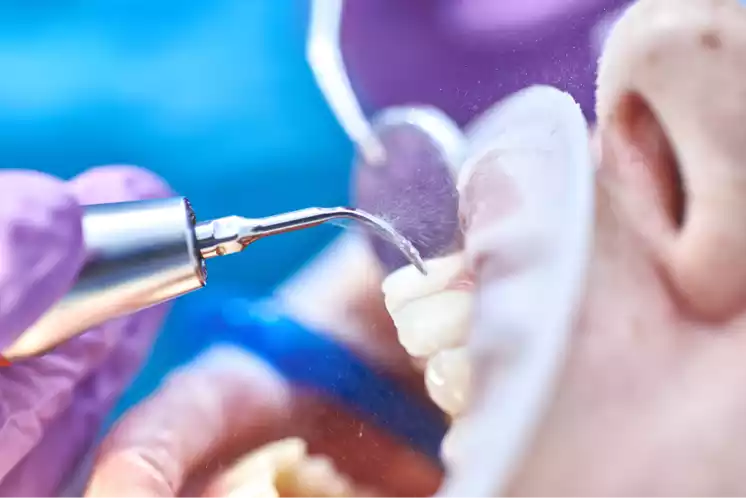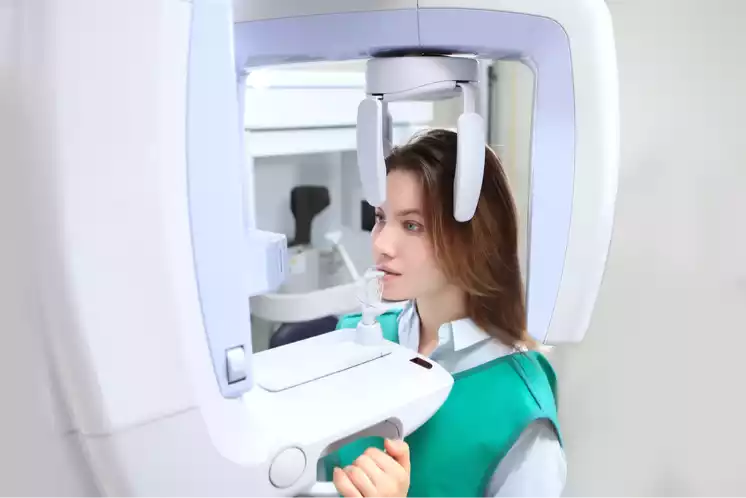What does ultrasound dental cleaning consist of?

The importance of dental cleaning
Perform a rigorous oral hygiene routine on a daily basis is fundamental. It is necessary to take into account that dental tartar or biofilm that accumulates in the mouth can cause tooth decay, gun disease and significantly affect health in general.
Professional dental cleaning
One of the treatments most performed at any odontologist is the so-called dental prophylaxis, or commonly known as scale and polish.
The advantages of carrying out a professional scale and polish are summarised by maintaining a good state of oral health, since all bacterial waste has been eliminated, leaving the dental enamel and the gums clean and healthy.
A professional scale and polish eliminates bacterial plaque and superficial stains while disinflaming gums and protecting dental enamel.
Use of ultrasound dental cleaning
Dental cleaning with an ultrasound device is a highly advanced dental cleaning technique that uses high frequency waves to break the calculus or accumulated tartar without damaging the dental enamel.
- The ultrasound device combines vibration and a stream of pressurised water to eliminate calcifications and bacterial plaque.
- The stream of water that flows through the end of the tip helps to eliminate the remains of the tartar eliminated and will prevent the scraper from becoming overheated.
- Once the whole calculus has been eliminated through this ultrasound device, the tooth will be polished with an abrasive paste that will leave it smooth without dyeing and return it to its original colour.
To eliminate these tartar deposits on teeth, odontologists and hygienists have always used instruments known as curette, which help them to physically eliminate these deposits. In the past, that has always been carried out manually, but with the appearance of ultrasound scrappers, the way in which the scale and polish or tartar removal are performed has changed.
In patients with periodontitis, the ideal thing is to combine ultrasound cleaning with a manual scraper to obtain optimum effects. The ultrasound scraper is designed mainly to eliminate large deposits of dental calculus, having to manually get rid of any small amount of tartar that remains, especially in areas of difficult access.
Differences between ultrasound dental cleaning and manual dental cleaning
- Using ultrasound devices to perform dental hygiene, the average duration of the treatment takes around a third less time than the manual cleaning with curettes.
- Furthermore, the odontologist or hygienist must apply less strength to the instrument since the scraper, through its vibrations and the stream of water expelled, does the largest part of the work; hence the majority of the patients experience little or no discomfort during the whole process.
- Patients that have a significant amount of tartar or accumulation of calculus may benefit enormously from ultrasound cleaning, since it is one of the most effective tools to get rid of old difficult-to-eliminate stains, such as those caused by coffee and smoking.
- The flow of water emitted by the device, the range of power and the frequency of the vibrations of the tip can be adjusted to help patients that suffer from sensitive teeth.
To sum up, ultrasound cleaning has provided a more rapid and efficient way for professionals to clean patients’ teeth and minimise the discomfort that they may suffer while they have their mouth cleaned.
And we should not forget home dental cleaning
The preventive function of the dental cleaning treatment is complemented with daily hygiene through brushing, the use of dental floss and mouthwashes.
Brushing plays a vital role in the maintenance of good oral health and in the fight against the accumulation of plaque. Many of the errors committed by patients involve the amount of time devoted to brushing teeth. Teeth must be brushed for two full minutes, three times a day, which may seem a lot of time, but it is essential when it comes to protecting teeth and preventing tartar from appearing.
Furthermore, it is necessary not to brush teeth too hard. It may seem that brushing harder will eliminate more food remains, but it may damage gums and wear down dental enamel, so it is necessary to take things calmly and use a toothbrush with soft bristles.





